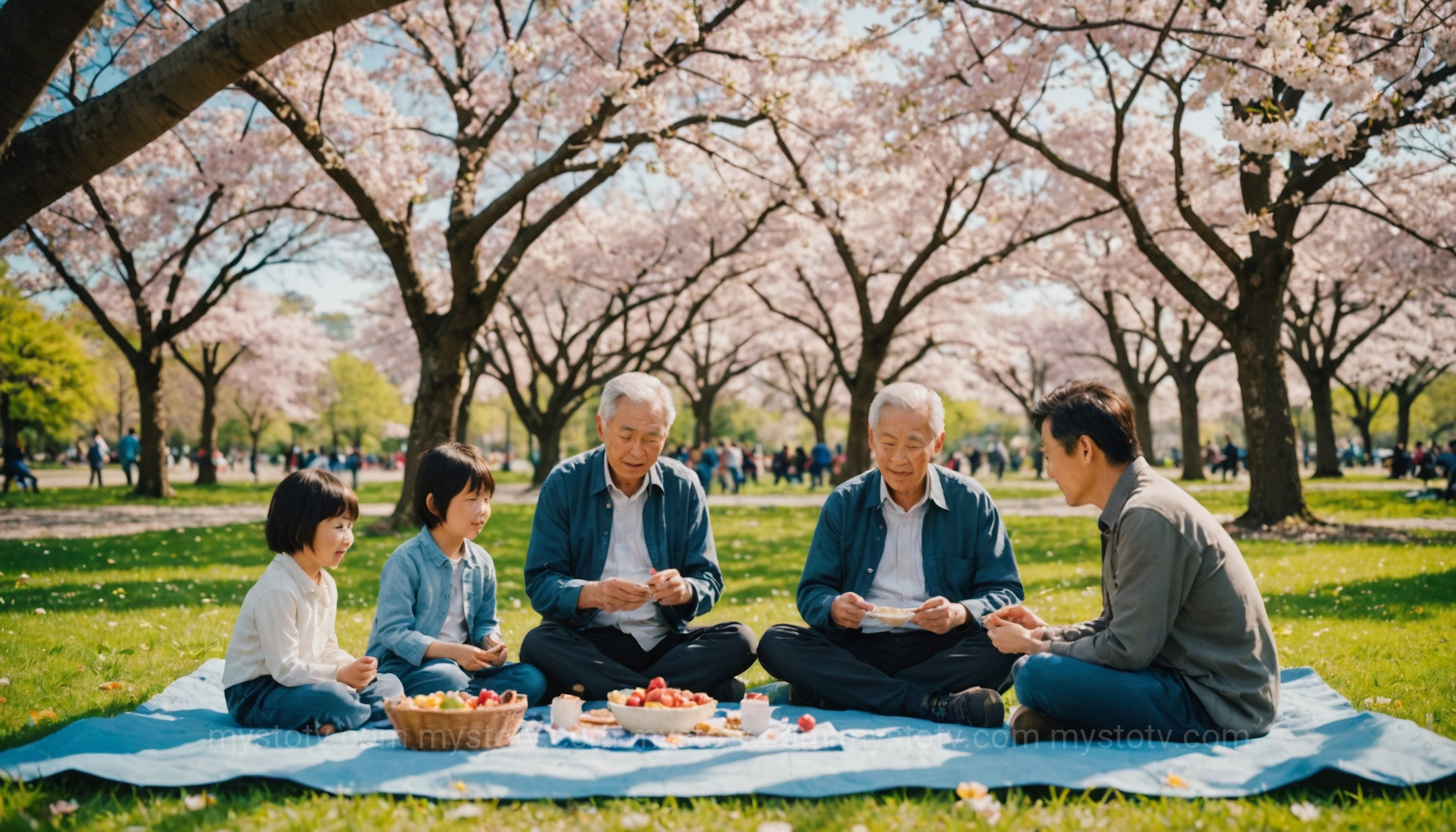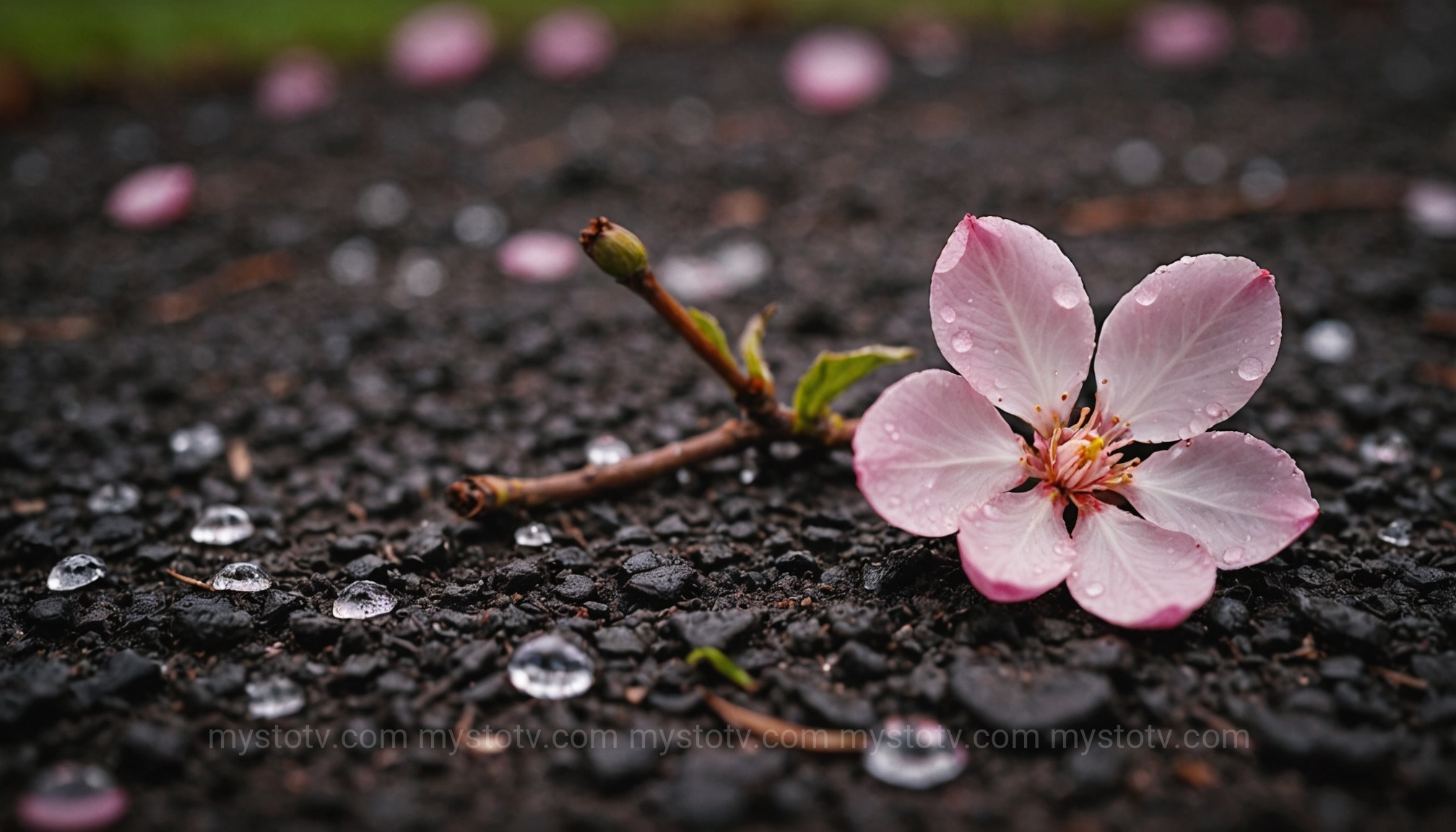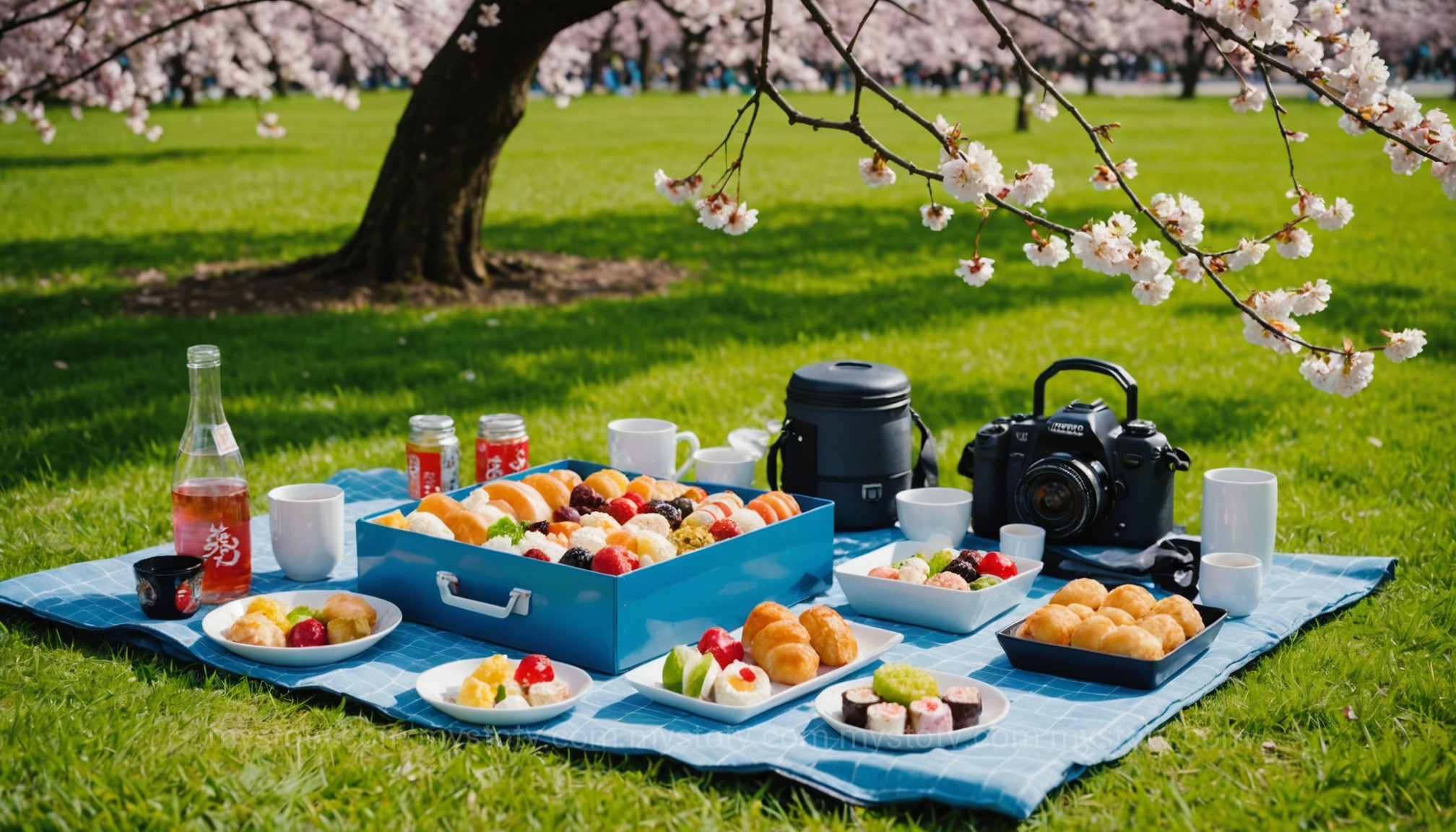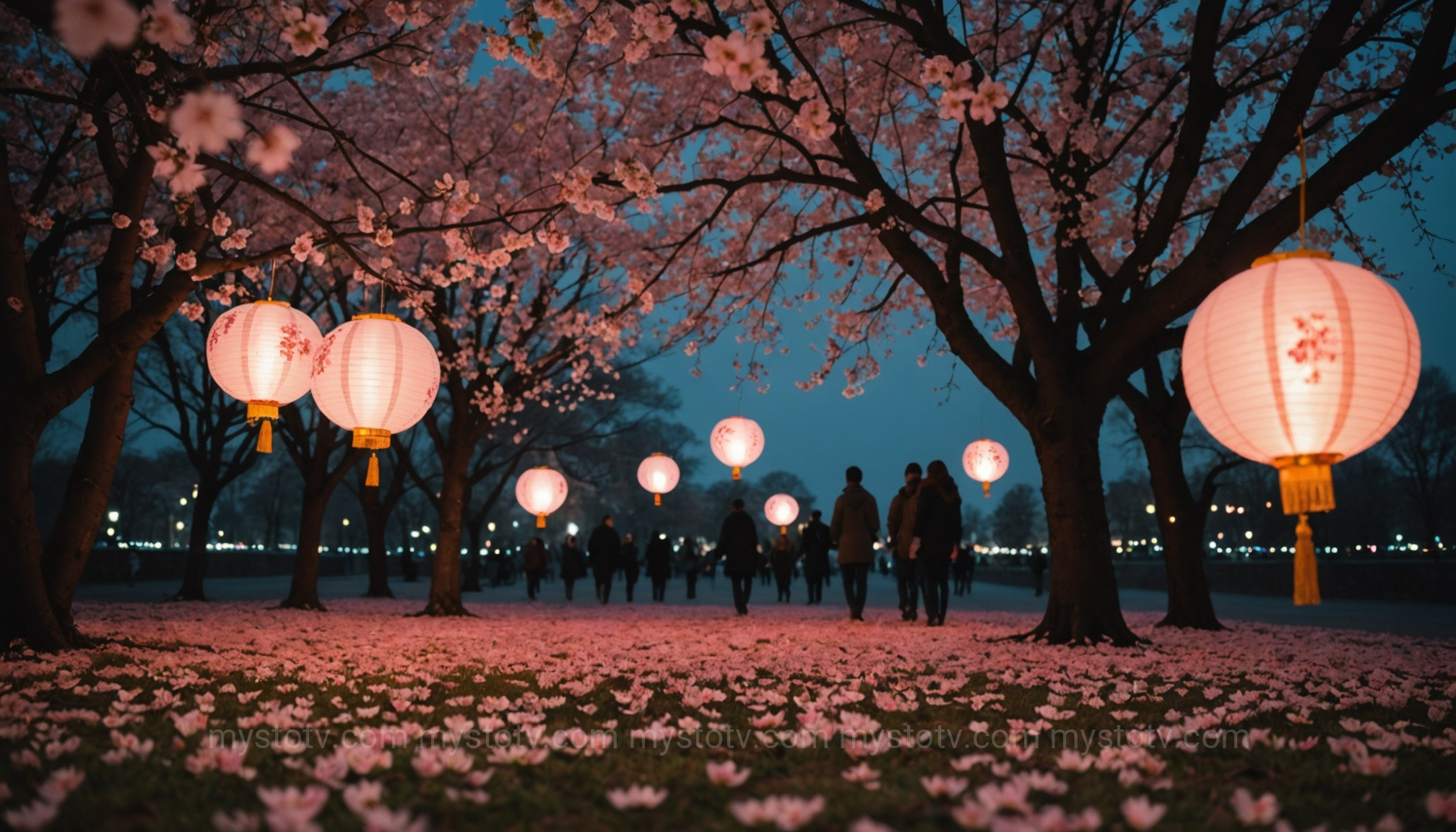I remember my first spring in Japan. The hype was inescapable—convenience stores burst with sakura-flavored everything, and news channels tracked the blossom front with the gravity of a weather emergency. I was skeptical, wondering if the reality could possibly live up to the marketing. Then, I found myself in a small, local park, away from the famous crowds. A gentle breeze sent a blizzard of pale pink petals into the air. In that quiet, overwhelmingly beautiful moment, the marketing fell away. I understood. This wasn't just about flowers; it was a deeply personal, communal experience. This was my introduction to the real hanami cherry blossom tradition, a love story written on the wind each year, and a story I’ve been trying to read ever since.
Contents
- 1 The Enduring Romance of the Hanami Cherry Blossom Festival
- 2 A Brief History of the Hanami Cherry Blossom Love Affair
- 3 The Deeper Meaning: Symbolism in the Hanami Cherry Blossom Love Story
- 4 How to Write Your Own Hanami Cherry Blossom Love Story: A Practical Guide
- 5 Modern Expressions of the Hanami Cherry Blossom Tradition
- 6 Frequently Asked Questions About Hanami
- 7 References
- 8 Conclusion: An Ever-Blooming Love Story
The Enduring Romance of the Hanami Cherry Blossom Festival

To call hanami a "festival" is both accurate and incomplete. It’s more than an organized event; it's a national mood, a collective sigh of appreciation that settles over Japan for a few precious weeks in spring. At its core, the hanami cherry blossom tradition is a love story—a centuries-old romance between the Japanese people and the ephemeral beauty of the sakura. This isn't a passive admiration from afar. It's an active, participatory courtship involving picnics (bento), sake, friends, family, and colleagues gathering under the flowering canopies. It is a time when the nation pauses to engage directly with nature's most poignant performance.
The analysis of this tradition reveals a cultural phenomenon that transcends simple flower-viewing. It's a social ritual that reinforces community bonds, from corporate teams celebrating a new fiscal year to families passing down the tradition through generations. The act of claiming a prime spot, sometimes hours or even a day in advance, is a testament to the devotion this floral love affair inspires. The vibrant, noisy celebrations in popular parks like Ueno in Tokyo stand in beautiful contrast to the quiet, contemplative moments one might find at a secluded temple in Kyoto. Both are valid expressions of this deep-seated cultural romance, demonstrating the multifaceted nature of Japan's connection to its iconic blossoms.
A Brief History of the Hanami Cherry Blossom Love Affair
This love story didn’t blossom overnight. Its roots trace back over a millennium, beginning as an exclusive pastime of the imperial court and aristocracy during the Nara Period (710-794). Initially, the custom involved admiring plum blossoms (ume), which bloomed earlier. However, by the Heian Period (794-1185), the delicate and transient sakura had captured the hearts of the nobility. The "Tale of Genji," an 11th-century literary masterpiece, contains vivid descriptions of elaborate hanami cherry blossom parties held by courtiers, solidifying the sakura's place in the nation's cultural imagination.
The tradition’s democratization is a key chapter in this story. During the Edo Period (1603-1868), under the rule of the Tokugawa shogunate, the practice spread to the samurai class and, eventually, to the common people. Shogun Tokugawa Yoshimune famously had cherry trees planted in public areas to encourage the practice among all citizens. This act transformed hanami from an elite privilege into a widespread cultural celebration. It became a unifying event, a time for people from all walks of life to share in the same simple, profound joy. This historical evolution shows a deepening of the relationship, moving from a formal, aristocratic appreciation to a passionate, public embrace that defines the modern hanami experience.
The Deeper Meaning: Symbolism in the Hanami Cherry Blossom Love Story

To truly understand the depth of Japan’s love for the sakura, one must look beyond the picnic blankets and sake cups. The hanami cherry blossom experience is steeped in profound philosophical and spiritual symbolism. This isn't just a love for beauty, but an appreciation for its specific nature: its breathtaking, heart-wrenching transience.
Mono no Aware: A Love for Fleeting Beauty
The core emotion of hanami is captured by the Japanese concept of mono no aware (物の哀れ). This phrase is often translated as "the pathos of things" or "a gentle sadness," but it’s more nuanced. It is an empathy toward the ephemeral nature of life and a recognition of the beauty in that impermanence. The cherry blossoms, which reach their peak (mankai) and then fall in just a week or two, are the ultimate symbol of this concept.
The love story, therefore, is not a simple one. It is a bittersweet romance. The peak of the blossoms’ beauty is inextricably linked to their imminent demise. This understanding adds a layer of poignancy and urgency to the celebration. People gather with such fervor precisely because they know this perfect moment cannot last. This is not a morbid fascination but a deep, appreciative understanding of the natural cycle of life, death, and renewal. It teaches an acceptance of mortality and change, finding profound beauty in the fleeting moments we are given. When you observe a hanami cherry blossom event, you are witnessing a nationwide meditation on this very principle.
Renewal and Hope: A New Chapter
While tinged with the sadness of their short life, the cherry blossoms are also a powerful symbol of hope, new beginnings, and renewal. Their appearance coincides with the start of the new fiscal and academic year in April, a time of significant transition in Japanese society. For students starting at a new school or employees joining a new company, the blooming sakura serve as a beautiful, natural backdrop to their own new chapters.
In this context, the hanami cherry blossom becomes a celebration of life's forward momentum. The blossoms that die and fall are not an ending but a necessary part of a cycle that promises their return the following year. This dual symbolism—of both transience and renewal—is what makes the love story so compelling. It acknowledges the sadness of endings while simultaneously celebrating the promise of beginnings, reflecting the complex, often contradictory, nature of life itself.
How to Write Your Own Hanami Cherry Blossom Love Story: A Practical Guide
Experiencing hanami is about more than just seeing the flowers; it's about participating in the story. Planning your own hanami cherry blossom viewing is an essential part of the journey. Here's a guide to help you create your own memorable chapter.
Timing Your Visit: The Sakura Chase
The cherry blossom front, or sakura zensen, moves from south to north across Japan. It typically begins in Okinawa in January and reaches Hokkaido in May. For the main islands of Kyushu, Shikoku, and Honshu (including cities like Tokyo, Kyoto, and Osaka), the peak season is usually from late March to early April. The Japan Meteorological Corporation releases official forecasts, which are updated frequently and treated with utmost seriousness. Following these forecasts is crucial. Booking flights and accommodation well in advance is essential, but be prepared for some flexibility. The "love story" is with nature, and she can be unpredictable; a cold snap can delay the bloom, while a warm spell can hasten it.
Choosing the Perfect Setting for Your Hanami Cherry Blossom Viewing

Where you experience hanami shapes its character. You have a spectrum of choices:
- Famous Urban Parks: Places like Ueno Park and Shinjuku Gyoen in Tokyo or Maruyama Park in Kyoto are iconic. They offer a lively, festive atmosphere with thousands of fellow revelers. The experience is communal and energetic, but requires arriving very early to secure a spot.
- Scenic and Historical Sites: Viewing blossoms at a castle (like Himeji Castle), along a river (like the Meguro River in Tokyo), or in a temple garden offers a more picturesque and often contemplative experience.
- Local Neighborhood Parks: For a more authentic and less crowded experience, simply wander into a local park. Here, you'll see families and neighbors enjoying the blossoms in a relaxed, intimate setting. This is often where the most personal hanami cherry blossom memories are made. This deeper meaning of the tradition is often more palpable in these quieter settings.
-
The Hanami Picnic Essentials
A hanami outing is incomplete without a proper picnic. Being prepared is a sign of respect for the tradition.
- The Tarp: A blue plastic sheet or picnic blanket is non-negotiable for marking your territory.
- Food (Bento): You can prepare your own, but an easier option is to buy a special "hanami bento" from a department store basement (depachika) or even a convenience store. These are beautifully arranged and delicious.
- Drinks: Sake, beer, and tea are standard. Many seasonal, sakura-themed drinks also become available. Remember to bring water to stay hydrated.
- Extras: Wet wipes, garbage bags (you must take all trash with you), and warm layers for when the sun goes down are essential for a comfortable experience.
Modern Expressions of the Hanami Cherry Blossom Tradition
Like any great love story, the tale of Japan and its sakura evolves with the times. While the core spirit remains, the ways in which people celebrate the hanami cherry blossom season have adapted to the modern world, ensuring its relevance for new generations.
Yozakura: A Romance After Dark

One of the most enchanting modern adaptations is yozakura (夜桜), or "night sakura." In many popular parks and locations, lanterns are hung or spotlights are used to illuminate the cherry trees after sunset. This creates a completely different atmosphere from daytime hanami. The experience is more magical, romantic, and mysterious. The blossoms appear to float in the darkness, taking on a ghostly, ethereal white or pink glow. Yozakura allows people to enjoy the blossoms after a day at work and offers a more sophisticated, often quieter, alternative to the boisterous daytime parties.
The Hanami Cherry Blossom in the Digital Age
The digital age has not diminished the love for hanami; it has amplified it. Social media platforms like Instagram are flooded with stunning images of sakura from every corner of Japan. The #sakura and #hanami hashtags become global galleries, allowing people worldwide to participate vicariously. Sakura forecast apps provide real-time updates, turning the "sakura chase" into a high-tech pursuit. This digital sharing doesn't replace the physical experience but rather complements it, creating a global community of sakura lovers and adding a new, modern layer to this ancient love story.
Frequently Asked Questions About Hanami
While the concept of hanami is simple, navigating the etiquette and logistics can be new for first-timers. Here are answers to a few common questions.
- Is it okay to touch the cherry blossom trees?
No, this is a very important point of etiquette. You should never touch, shake, or climb the trees. The branches are delicate, and pulling on them can damage the tree and prevent future blooms. Admire their beauty with your eyes, not your hands. The love story is one of respect.
- What is the etiquette for saving a spot?
Saving a spot with a tarp is common, but it has rules. It's considered polite to have at least one person stay with the tarp. Leaving a tarp unattended for many hours, especially overnight, is frowned upon in many parks. Be respectful of space and don't claim an excessively large area for a small group.
- What's the difference between sakura and hanami?
This is a key distinction. Sakura (桜) is the Japanese word for the cherry blossom flower itself. Hanami (花見), which literally translates to "flower viewing," is the name for the traditional custom and activity of gathering to appreciate them. So, you go to a park for hanami to see the sakura.
References
- Japan National Tourism Organization (JNTO). (n.d.). Cherry Blossoms. JNTO. https://www.japan.travel/en/see-and-do/cherry-blossoms/
- Japan Meteorological Corporation. (2024). Sakura Forecast. https://n-kishou.com/corp/news-contents/sakura/
- Keene, Donald. (1995). The Pleasures of Japanese Literature. Columbia University Press. (Provides context on Heian period aesthetics and literature like the "Tale of Genji").
Conclusion: An Ever-Blooming Love Story
The story of the hanami cherry blossom is far more than a simple appreciation of spring flowers. It's a profound, centuries-old cultural narrative about community, history, and a philosophy that finds deep beauty in the fleeting nature of life. It’s a love story that is renewed each year, as parks fill with laughter, sake is poured, and millions of people pause to look up at the pink and white canopy. To experience hanami is to become part of this story, to understand that the overwhelming beauty of the blossoms is magnified by the knowledge that they will soon be gone. It is a lesson written on the wind, a reminder to cherish the beautiful, transient moments—a love story that, like the sakura themselves, blooms again and again, forever captivating the heart of a nation.